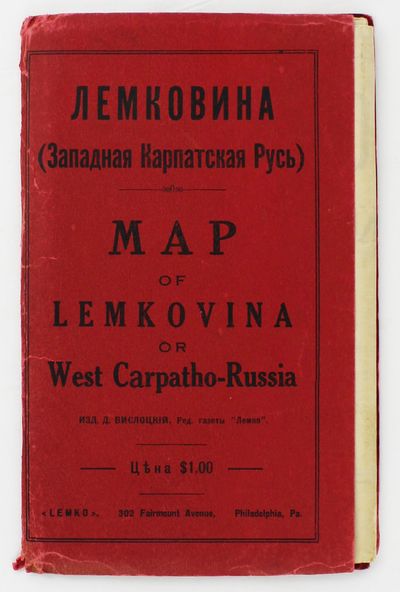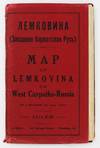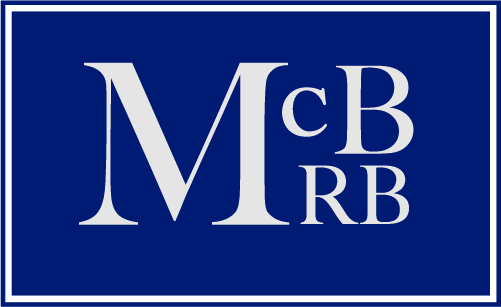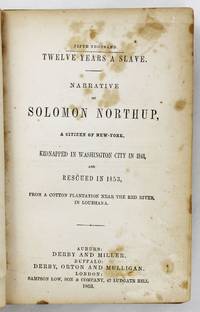1929 · Philadelphia
by [Eastern European Immigration]. [Maps]
Philadelphia: Lemko Press, 1929. Very good.. Lithographed folding map, approximately 32 x 40 inches, printed in pink and black. Housed in original red wrappers printed in black. Modest wear along folds, a couple of small separations at crossfolds, light marginal toning. Wrappers with minor spine and edge wear. An extremely rare map of "Lemkovina," the homeland of the Lemko, an Eastern Slavic people from the Central Carpathian Mountains (where Poland, Slovakia and Ukraine meet in the present day). From the late-19th century to the 1920s, tens of thousands of Lemkos immigrated to the Unites States and Canada -- fleeing war, oppression and seeking better (truncated) economic opportunities. Once in the United States, Lemko intellectuals founded institutions to preserve and promote Lemko culture in the New World and to lobby for sovereignty of the Lemko homeland. The present large-format map is an intriguing artifact of the Lemko-American immigrant experience. The map was drafted by the Lemko-American activist Dmitriy Vislocky and published by the Lemko Press in Philadelphia in 1929; it showcases the areas where the Lemko population prevailed, as well as areas of mixed Lemko-Slovakian and Lemko-Polish demographics; while it does not explicitly define Lemkovina as a sovereign state, its rhetorical direction is nevertheless clear.
The Lemko are an Eastern Slavic people who originate from a large area along both slopes of the Central Carpathian Mountains, in a region traditionally often referred to as "West Carpatho-Russia," located along the eastern stretch of today's border of Poland and Slovakia, and extending slightly east into Ukraine. The Lemko language is akin to Ukrainian and is written in Cyrillic. Traditionally many consider the Lemkos to be a subgroup of Russians or Ukrainians, although many Lemkos have tended to self-identify as a distinct ethnicity. The Lemkos have vibrant and sophisticated cultural traditions, with distinct music, folklore, clothing and customs. Most Lemkos are Eastern rite or Byzantine-rite Catholics, although some have converted to the Eastern Orthodox faith. The period leading up to, during, and after World War I was traumatic for the Lemkos. The group splintered their loyalties, with some supporting the Russians (both Red and White factions), while others were sympathetic to Ukrainian nationalism, and some (either voluntarily or under coercion) were allied with Austria-Hungary. Lemkos caught on the wrong side of events often met with cruel fates. In the aftermath of the war, Lemkos who supported the Red Russians formed the "Lemko-Rusyn People's Republic" (which existed from December 1918 to March 1920), a state that took in part of the northern slope of the Central Carpathians of Lemkovina. Meanwhile, further to the east was the pro-Ukrainian "Eastern Lemko Republic" (November 1918 to January 24, 1919). However, these republics were soon extinguished, with all Lemkovina being divided between Czechoslovakia and Poland. The Lemkos in Poland would have a very difficult time, as the Polish state considered them disloyal. Eventually they were forcibly displaced from their homeland.
Lemkos began to immigrate to the United States and Canada in the late 19th century, in good part due to economic opportunities. The greatest center of activity for Lemko peoples in North America was in Pennsylvania, although large communities could be found across the American Northeast and Midwest, as well as in places such as Toronto, Canada. Many Lemkos found decent jobs, initially in the burgeoning manufacturing industry. Smaller, but still significant Lemko communities developed as far away as Colorado and Alberta, where they were engaged in the ranching and mining industries. Today, hundreds of thousands of North Americans count Lemko ancestry. Lemkos adjusted very well to life across the Atlantic, and generally met with success. The most famous of all Lemko-Americans was the artist Andy Warhol (1928-1987), who was born in Pittsburgh, the son of Lemko immigrant parents. In the 1920s, Lemko intellectuals in America, largely based in Pennsylvania, formed a movement to preserve Lemko culture, while lobbying for the eventual resurrection of an autonomous (if not sovereign) Lemko homeland – Lemkovina. However, there was a great deal of internecine dispute over the nature of this proposed state, as some favored a pro-Ukraine sovereign entity, while others wanted it to be Soviet satellite (yet, the dream of a future sovereign Lemko nation, of any sort, was never to be realized, as powers ranging from the Czechoslovak and Polish governments to Hitler and Stalin would never allow it). Lemko culture flourished in the U.S. and Canada, centered around Lemko halls and churches, and beginning in the 1920s, a handful of small printing presses were established to serve and educate the community, issuing Lemko-language almanacs, primers, newspapers, and pamphlets. One of the most important of these houses was the Lemko Press of Philadelphia, which under the leadership of Dmitriy Vislocky, published the Lemko Gazette. The circle of the Lemko Press had a pronounced Ukrainophone allegiance and was at odds with some other Lemko-North American groups.
As a major part of their campaign to define "Lemkovina" and call for its eventual nationhood (presumably as a pro-Ukrainian sovereign state in opposition to both the Soviets and Poland), Dmitriy Vislocky and the Lemko Press produced the present map. As best as we are aware, it is the only large format map of the period to specifically show Lemkovina as a distinct entity, and being published in Philadelphia, it stands as a remarkable feat of Lemko-American immigrant cartography. The large format map, executed to the ample scale of 1:200,000, with text in Cyrillic, and lithographed from a hand-drawn template, shows the Polish-Slovakian frontier region (which today extends east into Ukraine), along the Central Carpathian Mountains, an area traditionally sometimes known as "West Carpatho-Russia." A very rugged and rural area, it is roughly framed by the the Dunajec River in the west, and the San and Uzh Rivers in the east, and with the cities of Nowy S cz, Poland, to the northwest, and Košice, Slovakia, to the southeast. The map delineates all major rivers, roads and railways and locates cities, towns and villages. The legend below the title explains the color-coding employed to define demographic areas. Territory shaded in bold pink are of majority ‘Russian’ [meaning Lemko and Rusyn] population (i.e., core Lemkovina), while the areas covered by southwest-northeast hashed lines are of mixed Lemko/Rusyn-Slovakian population and the areas with northwest-southeast hashed lines are of mixed Lemko/Rusyn-Polish population. Beyond are labeled the lands of Poland (to the north), Slovakia (to the south), Eastern Galicia (to the northeast) and Sub-Karpatsky Russia (Ukraine, to the southwest), while the map defines the Polish-Czechoslovak border as it was then internationally recognized. While the map does not explicitly state that Lemkovina is a country, Dmitriy Vislocky’s sovereignist direction of travel is nevertheless clear.
The present map is extremely rare. It was likely issued in only a small print run and the survival rate of such fragile, ephemeral American immigrant publications is very low. We can trace only a single institutional example of the map, held by the David Rumsey Map Collection at Stanford University. Beyond that we are aware of only a single other example as having appeared on the market in the last twenty-five years.
David Rumsey Map Collection (Stanford University): 11153.000. (Inventory #: 5372)
The Lemko are an Eastern Slavic people who originate from a large area along both slopes of the Central Carpathian Mountains, in a region traditionally often referred to as "West Carpatho-Russia," located along the eastern stretch of today's border of Poland and Slovakia, and extending slightly east into Ukraine. The Lemko language is akin to Ukrainian and is written in Cyrillic. Traditionally many consider the Lemkos to be a subgroup of Russians or Ukrainians, although many Lemkos have tended to self-identify as a distinct ethnicity. The Lemkos have vibrant and sophisticated cultural traditions, with distinct music, folklore, clothing and customs. Most Lemkos are Eastern rite or Byzantine-rite Catholics, although some have converted to the Eastern Orthodox faith. The period leading up to, during, and after World War I was traumatic for the Lemkos. The group splintered their loyalties, with some supporting the Russians (both Red and White factions), while others were sympathetic to Ukrainian nationalism, and some (either voluntarily or under coercion) were allied with Austria-Hungary. Lemkos caught on the wrong side of events often met with cruel fates. In the aftermath of the war, Lemkos who supported the Red Russians formed the "Lemko-Rusyn People's Republic" (which existed from December 1918 to March 1920), a state that took in part of the northern slope of the Central Carpathians of Lemkovina. Meanwhile, further to the east was the pro-Ukrainian "Eastern Lemko Republic" (November 1918 to January 24, 1919). However, these republics were soon extinguished, with all Lemkovina being divided between Czechoslovakia and Poland. The Lemkos in Poland would have a very difficult time, as the Polish state considered them disloyal. Eventually they were forcibly displaced from their homeland.
Lemkos began to immigrate to the United States and Canada in the late 19th century, in good part due to economic opportunities. The greatest center of activity for Lemko peoples in North America was in Pennsylvania, although large communities could be found across the American Northeast and Midwest, as well as in places such as Toronto, Canada. Many Lemkos found decent jobs, initially in the burgeoning manufacturing industry. Smaller, but still significant Lemko communities developed as far away as Colorado and Alberta, where they were engaged in the ranching and mining industries. Today, hundreds of thousands of North Americans count Lemko ancestry. Lemkos adjusted very well to life across the Atlantic, and generally met with success. The most famous of all Lemko-Americans was the artist Andy Warhol (1928-1987), who was born in Pittsburgh, the son of Lemko immigrant parents. In the 1920s, Lemko intellectuals in America, largely based in Pennsylvania, formed a movement to preserve Lemko culture, while lobbying for the eventual resurrection of an autonomous (if not sovereign) Lemko homeland – Lemkovina. However, there was a great deal of internecine dispute over the nature of this proposed state, as some favored a pro-Ukraine sovereign entity, while others wanted it to be Soviet satellite (yet, the dream of a future sovereign Lemko nation, of any sort, was never to be realized, as powers ranging from the Czechoslovak and Polish governments to Hitler and Stalin would never allow it). Lemko culture flourished in the U.S. and Canada, centered around Lemko halls and churches, and beginning in the 1920s, a handful of small printing presses were established to serve and educate the community, issuing Lemko-language almanacs, primers, newspapers, and pamphlets. One of the most important of these houses was the Lemko Press of Philadelphia, which under the leadership of Dmitriy Vislocky, published the Lemko Gazette. The circle of the Lemko Press had a pronounced Ukrainophone allegiance and was at odds with some other Lemko-North American groups.
As a major part of their campaign to define "Lemkovina" and call for its eventual nationhood (presumably as a pro-Ukrainian sovereign state in opposition to both the Soviets and Poland), Dmitriy Vislocky and the Lemko Press produced the present map. As best as we are aware, it is the only large format map of the period to specifically show Lemkovina as a distinct entity, and being published in Philadelphia, it stands as a remarkable feat of Lemko-American immigrant cartography. The large format map, executed to the ample scale of 1:200,000, with text in Cyrillic, and lithographed from a hand-drawn template, shows the Polish-Slovakian frontier region (which today extends east into Ukraine), along the Central Carpathian Mountains, an area traditionally sometimes known as "West Carpatho-Russia." A very rugged and rural area, it is roughly framed by the the Dunajec River in the west, and the San and Uzh Rivers in the east, and with the cities of Nowy S cz, Poland, to the northwest, and Košice, Slovakia, to the southeast. The map delineates all major rivers, roads and railways and locates cities, towns and villages. The legend below the title explains the color-coding employed to define demographic areas. Territory shaded in bold pink are of majority ‘Russian’ [meaning Lemko and Rusyn] population (i.e., core Lemkovina), while the areas covered by southwest-northeast hashed lines are of mixed Lemko/Rusyn-Slovakian population and the areas with northwest-southeast hashed lines are of mixed Lemko/Rusyn-Polish population. Beyond are labeled the lands of Poland (to the north), Slovakia (to the south), Eastern Galicia (to the northeast) and Sub-Karpatsky Russia (Ukraine, to the southwest), while the map defines the Polish-Czechoslovak border as it was then internationally recognized. While the map does not explicitly state that Lemkovina is a country, Dmitriy Vislocky’s sovereignist direction of travel is nevertheless clear.
The present map is extremely rare. It was likely issued in only a small print run and the survival rate of such fragile, ephemeral American immigrant publications is very low. We can trace only a single institutional example of the map, held by the David Rumsey Map Collection at Stanford University. Beyond that we are aware of only a single other example as having appeared on the market in the last twenty-five years.
David Rumsey Map Collection (Stanford University): 11153.000. (Inventory #: 5372)





![Famous Birmingham Blue Jay Jubilee Singers of Birmingham, Alabama [caption title]](https://d3525k1ryd2155.cloudfront.net/h/007/578/1695578007.0.m.jpg)